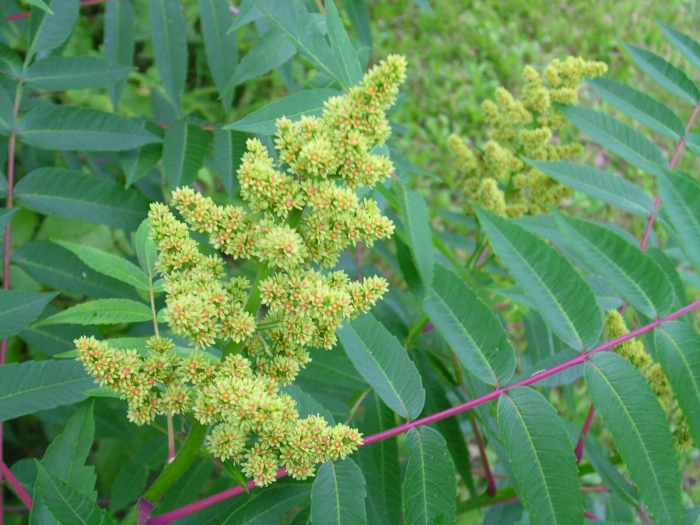Smooth Sumac
(Rhus glabra)
Smooth Sumac (Rhus glabra)
/
/

Superior National Forest
CC BY 2.0






























































































Estimated Native Range
Summary
Smooth Sumac is valued for its vibrant fall foliage and its ability to thrive in poor soils. It is often used in naturalized plantings, as a border shrub, or for erosion control due to its suckering habit. This plant is drought-tolerant, preferring full sun to part shade and well-drained soils. While it is low-maintenance, it can spread aggressively via root suckers, which may require management in garden settings. Rhus glabra is potentially invasive outside its native range, so gardeners should consult local guidelines before planting.CC BY-SA 4.0
Plant Description
- Plant Type: Shrub
- Height: 8-15 feet
- Width: 9-15 feet
- Growth Rate: Moderate
- Flower Color: Green, Yellow
- Flowering Season: Spring
- Leaf Retention: Deciduous
Growth Requirements
- Sun: Full Sun, Part Shade
- Water: Low
- Drainage: Fast, Medium
Common Uses
Bank Stabilization, Bee Garden, Bird Garden, Butterfly Garden, Deer Resistant, Drought Tolerant, Erosion Control, Fire Resistant, Hummingbird Garden, Low Maintenance, Rabbit Resistant, Salt Tolerant, Showy Flowers, Street Planting
Natural Habitat
Open woodlands, fields, and hillsides across the Eastern USA, parts of the US Intermountain West, and Northern Mexico
Other Names
Common Names: Smooth Sumach , White Sumac , Vinegar-Bush , Vinegar-Tree , Scarlet Sumac , Scarlet Sumach , Red Sumac , Upland Sumach , Gladde Sumak , Scharlach-Sumach , Korallsumak
Scientific Names: Rhus glabra , Rhus glabra var. cismontana , Rhus borealis , Rhus glabra var. laciniata , Rhus glabra var. occidentalis , Rhus arguta , Rhus angustiarum , Rhus cismontana , Rhus glabra var. glabra , Rhus albida
GBIF Accepted Name: Rhus glabra L.